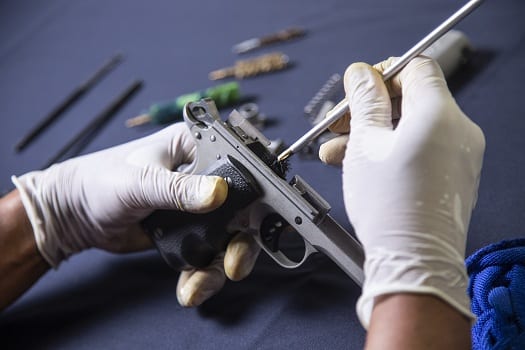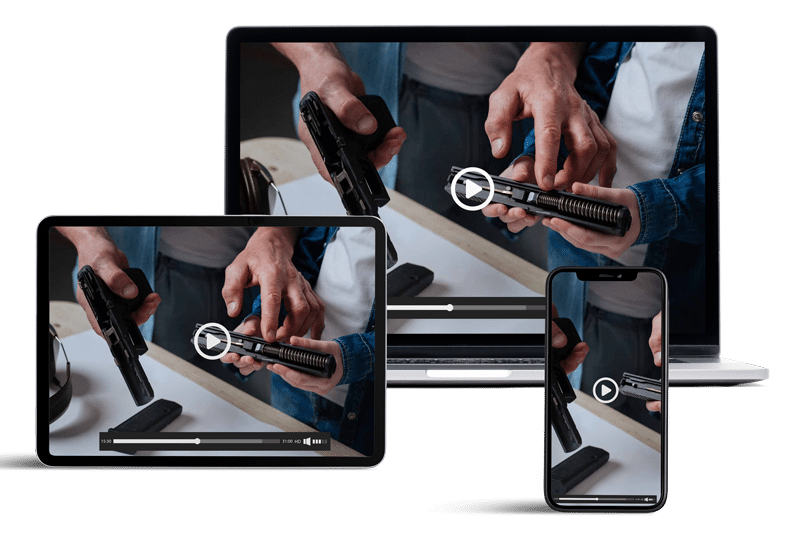Correct cleaning technique is an important part of ensuring your handgun’s safe and reliable performance. Over time, fouling will build up in your handgun, which can cause malfunctions, and occasional thorough cleaning will maximize reliability. In addition, a new handgun may ship from the manufacturer with oil or another preservative coating inside the barrel and chambers, and this coating should be removed by cleaning before you shoot the gun. Following proper cleaning procedures will keep your handgun operating smoothly and avoid the wear that can be caused by improper cleaning. The firearms safety education professionals from Online Texas LTC, a premier provider of online LTC classes, explain how to clean your handgun correctly.
Using Proper Cleaning Equipment
Many specialized cleaning products and tools exist, but the essential tools are a cleaning rod (which will be threaded on one end to accept attachments), a bore brush, a patch jag (which holds a cloth patch on the end of the cleaning rod), and a supply of cloth patches. The brush will be sized to the bore, so make sure to buy a brush in the correct caliber for your handgun. In addition, you’ll need a cleaning solvent, a preservative to protect the inside of the barrel, and a lubricant for your handgun’s moving parts. There are many options on the market, some of which work as all-in-one cleaners, lubricants, and protectants.
Cleaning a Semiautomatic Pistol
The barrel of a semiautomatic pistol can be removed from the frame when the pistol is field stripped. The field stripping process varies by pistol, so consult your owner’s manual for the proper disassembly technique. If you don’t have your gun’s manual, check for it online. Most manufacturers make their manuals available online as PDF files.
Once the barrel is removed, apply your solvent to your brush and run it through the barrel from the breech, or back end (starting from the muzzle end can cause wear on your barrel crown, which will affect accuracy). Push the brush all the way through, and then pull it back out. Don’t scrub back and forth within the barrel.
When the inside of the barrel is clear of fouling, attach your patch jag and a clean patch to the cleaning rod, apply your protectant to the patch, and run it back and forth beginning at the breech end. When the patch is dark, replace it with a clean one and repeat until the patch comes out clean.
Once your bore is clean, apply lubricant to the pistol’s moving parts as directed by the owner’s manual. Don’t overlubricate: a single drop at the proper place is usually all that’s needed.
Cleaning a Revolver
Most revolvers don’t have barrels that are easy to remove, so they must be cleaned from the muzzle end. Take care to avoid letting your cleaning rod come in contact with the muzzle while cleaning to avoid wear to the crown.
Apart from this, the process is very similar to cleaning a semiautomatic handgun: open your cylinder (or remove it completely, in the case of a single-action revolver) and run your brush fully through the barrel and back until fouling is removed, then run patches until they come out clean. Repeat this process for each of the chambers in the cylinder, then lubricate sparingly as directed by your manual.
If you own a handgun, it’s essential to know how to clean it properly to ensure its safety and effective performance. Online Texas LTC is dedicated to providing the finest firearms training available. Whether you simply need to learn how to handle your gun and shoot it safely or you want to take a Texas license to carry online course, Online Texas LTC has what you need. Give us a call today at 512-675-2124.





